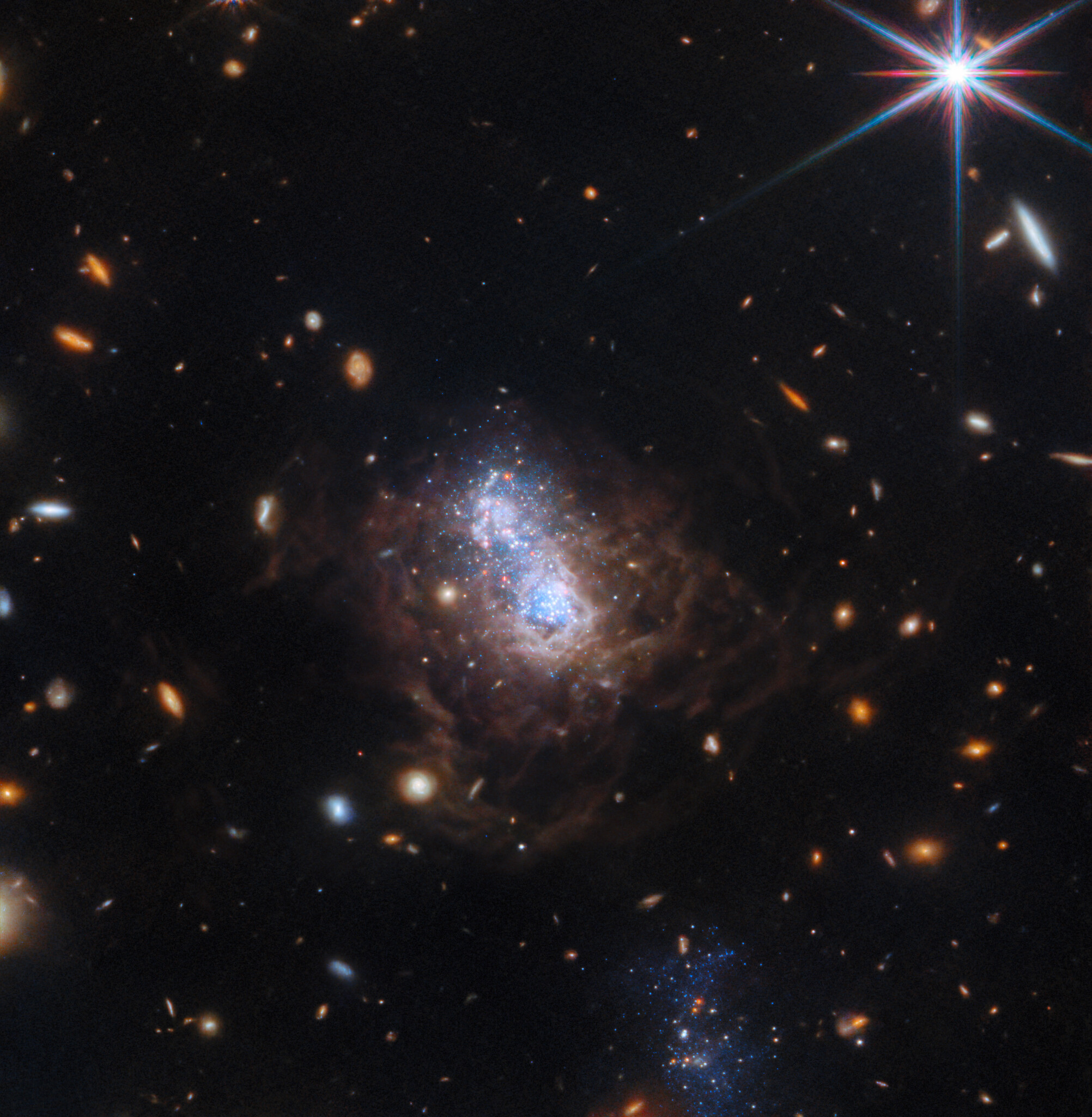Space photo of the week: James Webb telescope reveals surprising starburst in ancient galaxy
New infrared observations from the James Webb Space Telescope unveil a galaxy far, far away that's creating new stars.

What it is: The irregular dwarf galaxy I Zwicky 18
Where it is: 59 million light-years away, in the constellation Ursa Major
When it was published: March 26, 2024
Why it's so special: The galaxy I Zwicky 18 may have an odd name, but it's the galaxy's odd appearance that has caught the attention of astronomers using the James Webb Space Telescope (JWST).
This new image from JWST (also available as a zoomable version) reveals that this irregular dwarf galaxy has undergone several sudden bursts of star formation, the European Space Agency (ESA) said in a description of the image. Its low content of heavy elements (those heavier than hydrogen and helium) makes it typical of the galaxies that existed in the early universe. It's also much smaller than the Milky Way.
Related: 35 jaw-dropping James Webb Space Telescope images
If you look at the galaxy's core, you can see two distinct bright areas studded with stars. It's thought that the youngest stars are in the northwest region. Both places are surrounded by brown filaments — gas bubbles heated by stellar winds and intense ultraviolet radiation emitted by young stars burning exceptionally hot, ESA said.
Get the world’s most fascinating discoveries delivered straight to your inbox.
One reason for these two lobes of young stars may be the presence of another nearby galaxy. You can see it below I Zwicky 18 in this image as a collection of blue stars. The small galaxy orbits its larger companion, and its gravitational influence may trigger star formation within it, scientists suspect.
I Zwicky 18 gets its name from its discoverer, Fritz Zwicky, the Swiss astronomer who discovered the galaxy in the 1930s.
Almost as impressive as the photo is what exists behind I Zwicky 18 and its neighbor in this image. In the top-right corner is a star in front of the galaxy. But around it are hundreds of other oval-shaped galaxies in the background, some white and others tinted orange because they're so far away. (Reddish light has a longer wavelength.)
The image comes from a program designed to study the life cycle of dust in I Zwicky 18, building on observations in visible light by the Hubble Space Telescope. While Hubble found fainter, older red stars that hinted that stars were forming 1 billion to 10 billion years ago, JWST's infrared observations reveal much more recent star formation.

Jamie Carter is a freelance journalist and regular Live Science contributor based in Cardiff, U.K. He is the author of A Stargazing Program For Beginners and lectures on astronomy and the natural world. Jamie regularly writes for Space.com, TechRadar.com, Forbes Science, BBC Wildlife magazine and Scientific American, and many others. He edits WhenIsTheNextEclipse.com.
 Live Science Plus
Live Science Plus






